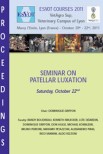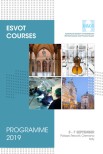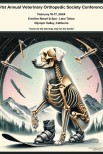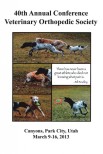ABSTRACT
Objectives—To compare the precision of radiography and computed tomography (CT) preoperatively in the standing position for identification of guidelines for screw insertion in the distal phalanx, and to identify whether standing CT might improve operative time compared with preoperative radiographic planning.
Study Design—Experimental ex vivo study.
Animals—Cadaveric equine thoracic limb pairs (n=10).
Methods—Insertion of a 4.5 mm cortex screw in lag fashion into an intact distal phalanx was evaluated in 2 groups (n=10) of cadaveric equine thoracic limbs. In 1 group, the site, direction, and length of the implant were determined by radiography, and in the other group, by CT. Accuracy of screw placement was verified by specimen dissection. Outcomes were (1) absence of penetration of the articular surface, the solar surface, or the semilunar canal (2) appropriate length and direction of the screw. Surgical time was also measured.
Results—No screw penetrated the articular surface, the solar surface, or the semilunar canal in either group. CT was more accurate to identify guidelines for screw insertion (U=23.50, P=.049). With CT, surgical time (mean, 7.7 minutes) was significantly shorter (U=0.000, P=.000) than with radiography (mean, 12.7 minutes).
Conclusion—Standing CT can be used to accurately determine anatomic landmarks for screw insertion in lag fashion in sagittal fractures of the distal phalanx.
Clinical Relevance—This study has a clear clinical relevance for improved internal fixation of sagittal fractures of the distal phalanx.









